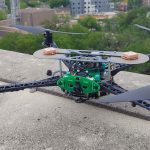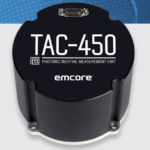Today, most vehicle navigation systems rely mainly on Global Positioning System (GPS) receivers as the primary source of information to provide the vehicle position for an unlimited number of users anywhere on the planet.
Today, most vehicle navigation systems rely mainly on Global Positioning System (GPS) receivers as the primary source of information to provide the vehicle position for an unlimited number of users anywhere on the planet.
Since its advent, the number of applications using GPS has increased dramatically and include tracking the location and speed of people, truck fleets, trains, ships, or planes; directing emergency vehicles to the scene of an accident; mapping where a city’s assets are located; and providing precise timing for endeavors that require large-scale co-ordination.
GPS, however, can reliably provide these types of information only under ideal conditions, that is, in open areas in which GPS satellite signals can be received. In other words, the system doesn’t work very well in urban canyons, canopy areas, and similar environments due to signal blockage and attenuation deteriorating the obtainable positioning accuracy.
For the moment, any sophisticated urban application that demands essentially continuous position determination, cannot depend on GPS as a stand-alone system — those who have tried are still trying!
Cost and space constraints are currently driving manufacturers of vehicles to investigate and develop the next generation of low-cost and small-size navigation and guidance systems to meet the fast growing demand for in the location-based services and telematics markets. Advances in micro-electro-mechanical systems (MEMS) technology have shed promising light on the development of such systems.
But such sensors high noise and drift rate remain a problem, which may be alleviated in combination with GPS. Solutions that integrate navigation data have been recognized as the most challenging aspects that remain to turn MEMS-based inertial systems into robust, accurate navigation systems.
Introducing MEMS
The last two decades have shown an increasing demand for low-cost and miniature inertial sensors for many navigation applications. MEMS-based inertial sensors efficiently meet this demand. However, due to their lightweight and fabrication process, MEMS sensors still have some performance limitations, which consequently affect their obtainable accuracy and sensitivity.
. . .
A Profile: the EKF
Traditionally, error state Kalman filters — either the LKF or the EKF — were used in the field of navigation. If an INS error control loop (feedback) exists, then the LKF can be considered as the EKF. A low-cost INS cannot operate for a long time without the feedback loop. Hence, this article will only discuss EKF implementation.
. . .
Tests and Results
This section compares the performance of the EKF and the UKF using datasets collected in land vehicles with three different MEMS-based IMUs. The same set of GPS receivers and postprocessing software were used in all of the tests. We use several IMUs in different field tests so as to be able to draw general conclusions about the two estimation algorithms. In this article, only the results of the custom-built IMU sensor triads will be shown in detail as an example.
. . .
Scenario 1: Results with Continuous GPS Updates
The first scenario ran the algorithm with regular GPS updates. Our purpose was mainly to check whether the algorithms worked correctly or not. With continuous GPS measurements, the trajectory will generally follow that of the DGPS solution, while attitude errors will somehow reflect the quality of the integrated systems.
. . .
Scenario 2: Results with Simulated GPS Outages
In the second scenario we processed the datasets with simulated GPS outages, which covered typical driving conditions of land vehicles. It is a challenge for a low-cost INS to achieve high accuracy during GPS outages and also is a popular criterion for evaluating the performance of an integrated navigation system.
. . .
Scenario 3: Results with Large Initial Attitude Errors
Typically, coarse alignment of an INS is done in stationary mode using leveling (by accelerometers) followed by gyro-compassing or, alternatively by using an analytical method that solves the gravity and the Earth rotation measurements in one step.
For MEMS-based IMUs, however, the gyroscopes are not accurate enough to sense the Earth’s rotation rate. Further, if the IMU is installed in a consumer vehicle, we cannot expect the user to wait until the alignment is finished. Hence, in-motion alignment is typically used.
. . .
Conclusions
This article has reviewed the implementation of the EKF and the UKF and compared their performance for integrated low-cost inertial navigation systems. Both the EKF and the UKF work well for the integration of typical MEMS-based IMU and GPS. Performance of the EKF and the UKF is generally similar (in both cases when GPS signals are available and when GPS signals are blocked).
The EKF requires a special navigator error model to handle large initial attitude errors. However, the UKF can deal with such errors without additional effort, and the transition from the large to small attitude uncertainties is seamless. Therefore, the UKF will be beneficial in the applications where in-motion alignment is required.
For the complete story, including figures, graphs, and images, please download the PDF of the article, above.
Acknowledgements
This study was funded by research grants from Natural Science and Engineering Research Council of Canada (NSERC) and Geomatics for Informed Decisions (GEOIDE), Network Centers of Excellence (NCE) awarded to Dr. Naser El-Sheimy. The authors would like to thank Dr. Bruno M. Scherzinger, Applanix Corporation, for providing a dataset for the ISIS IMU test.






